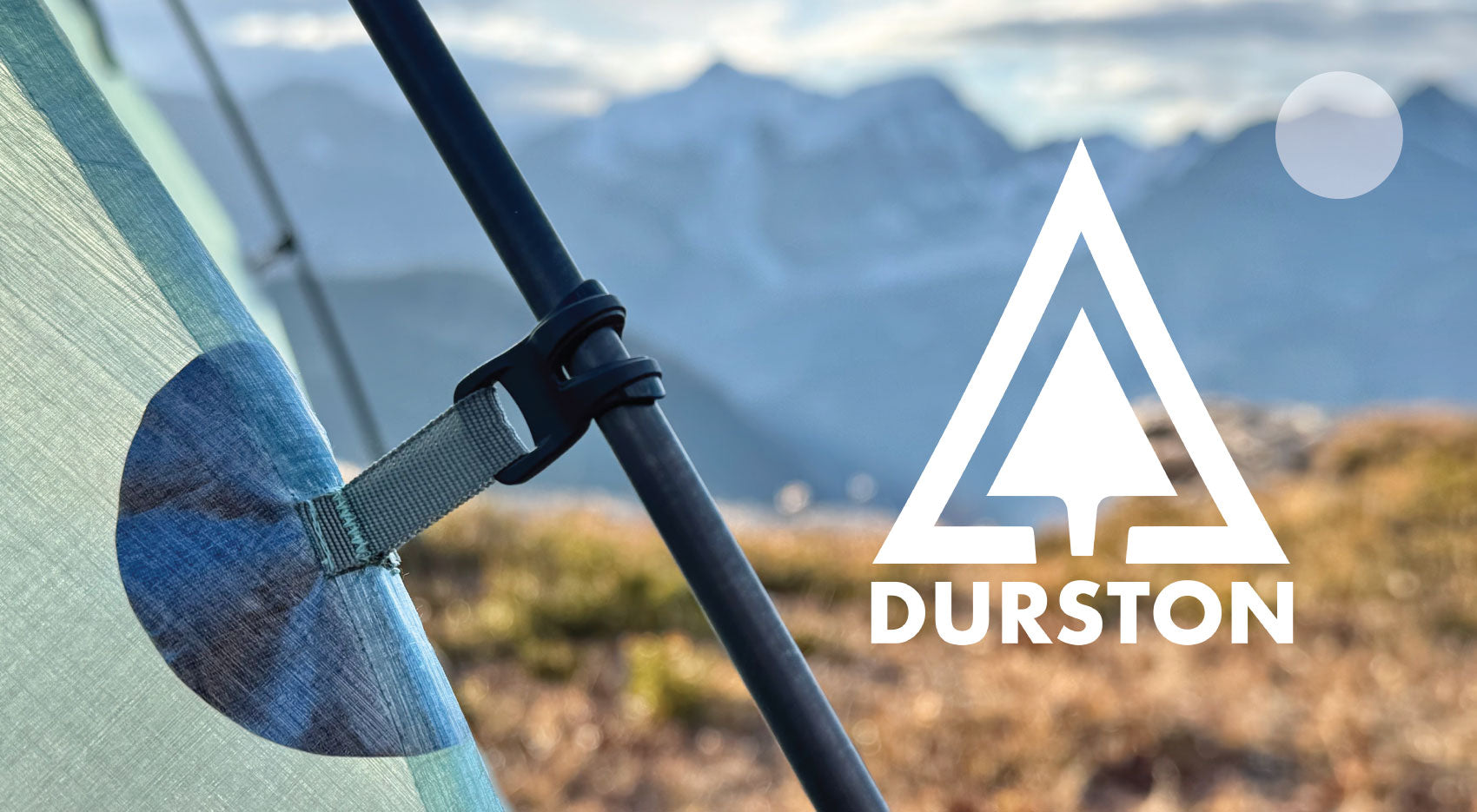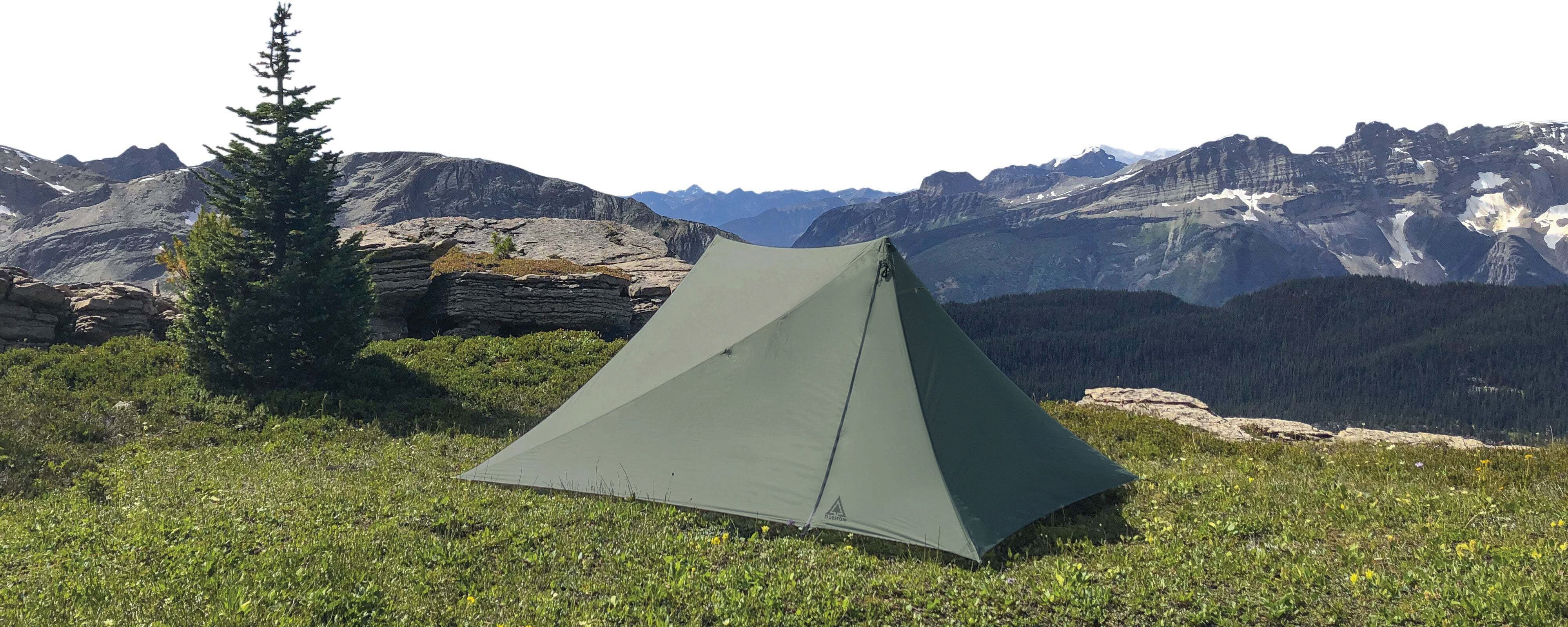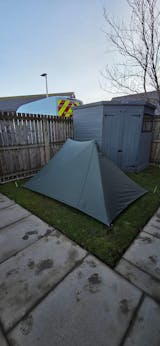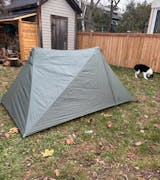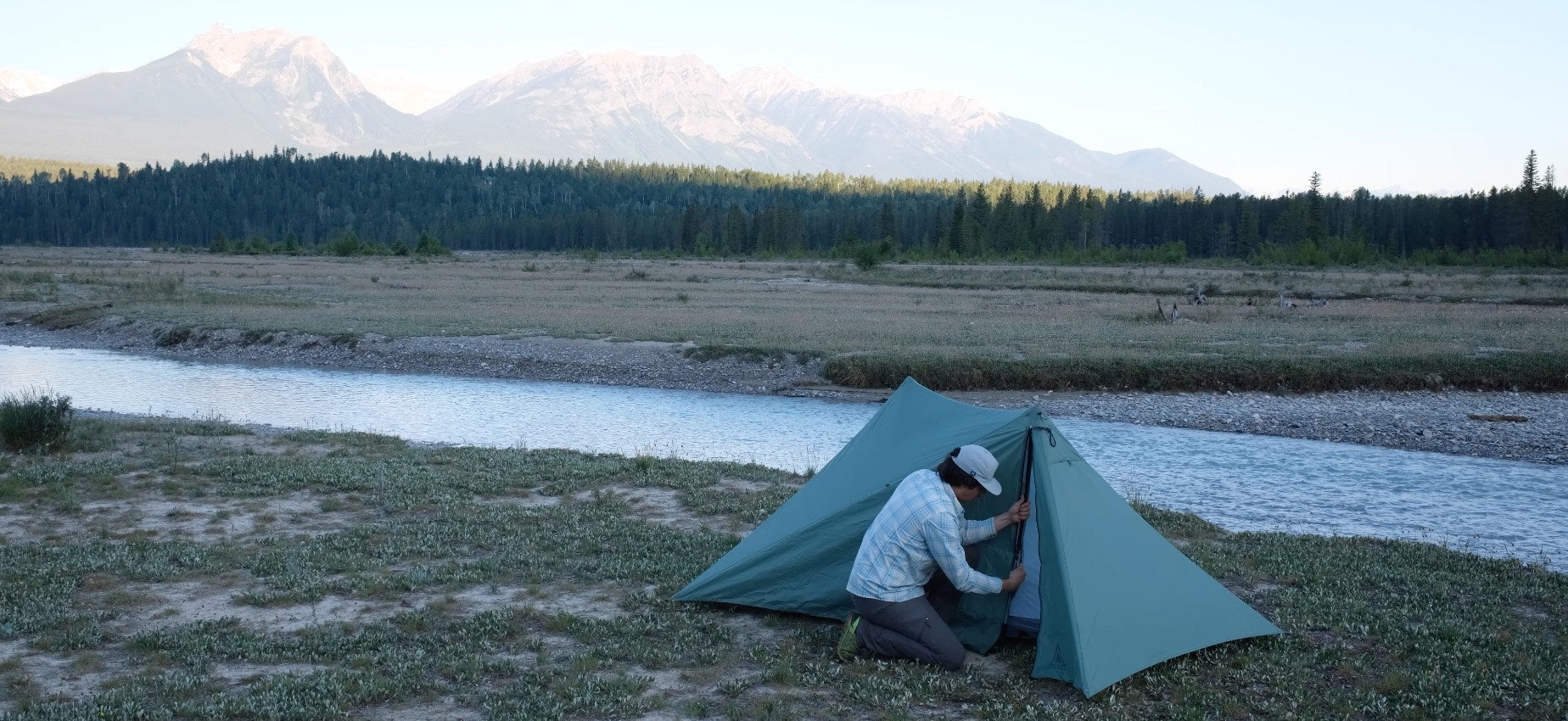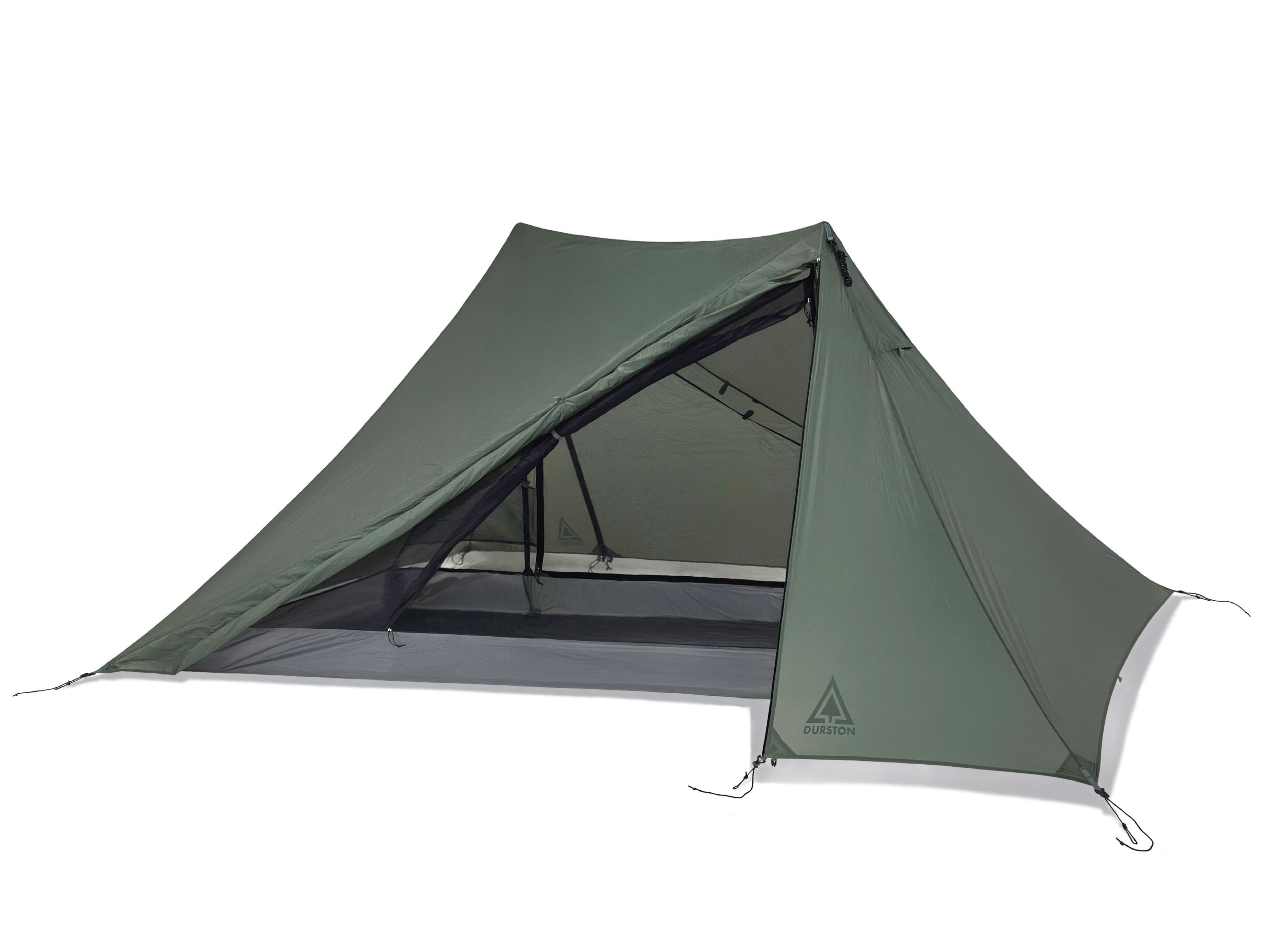
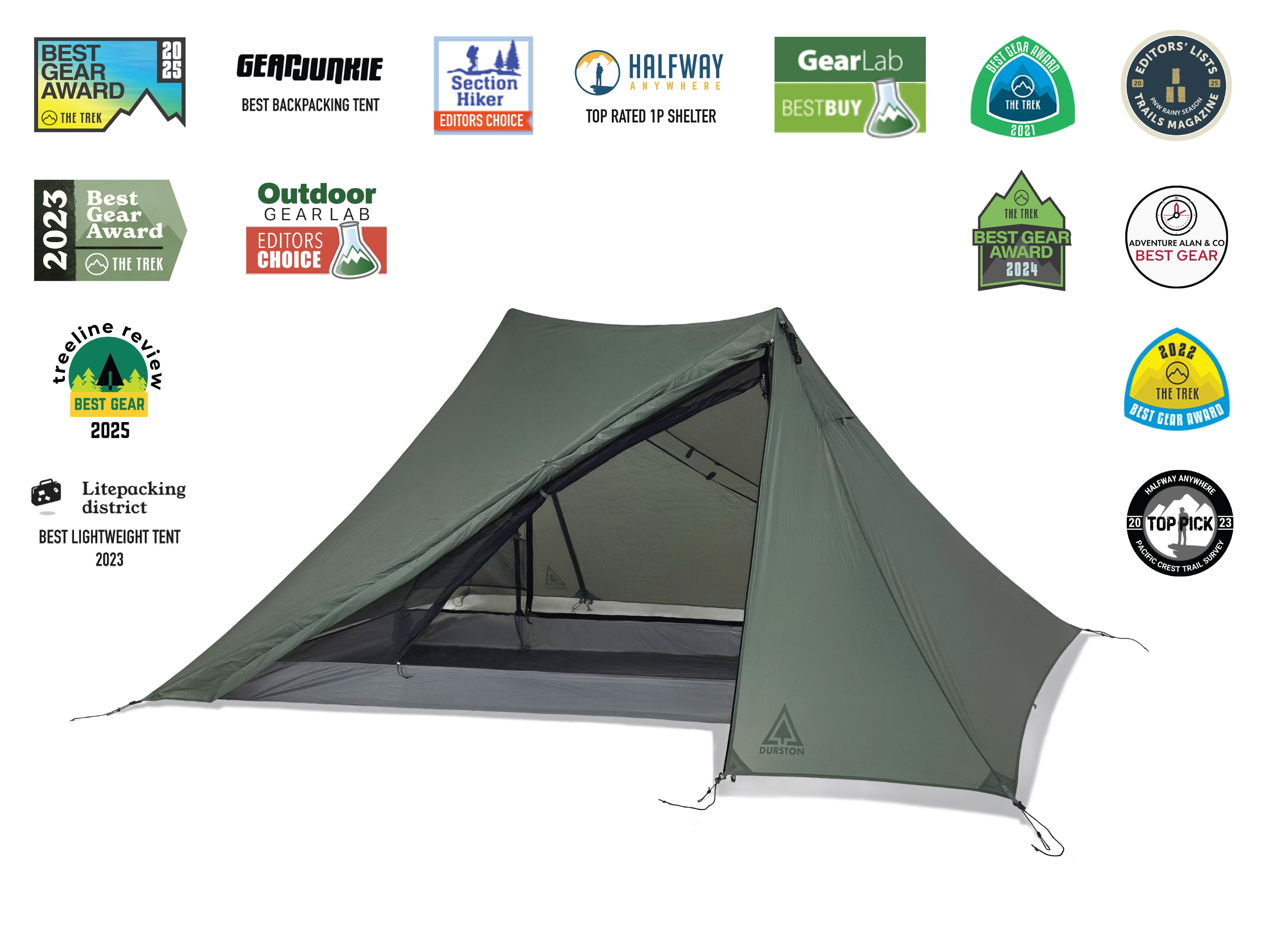
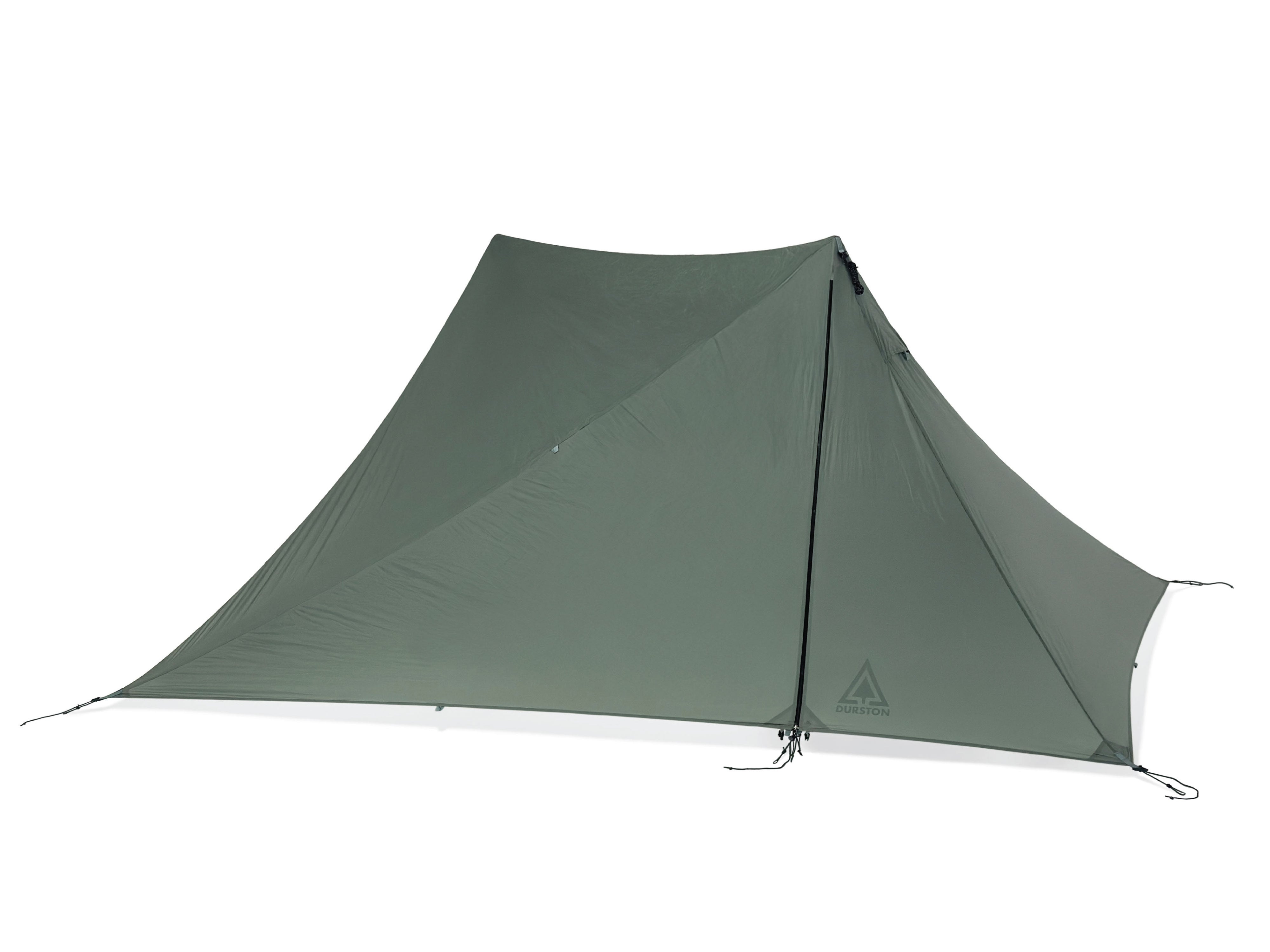
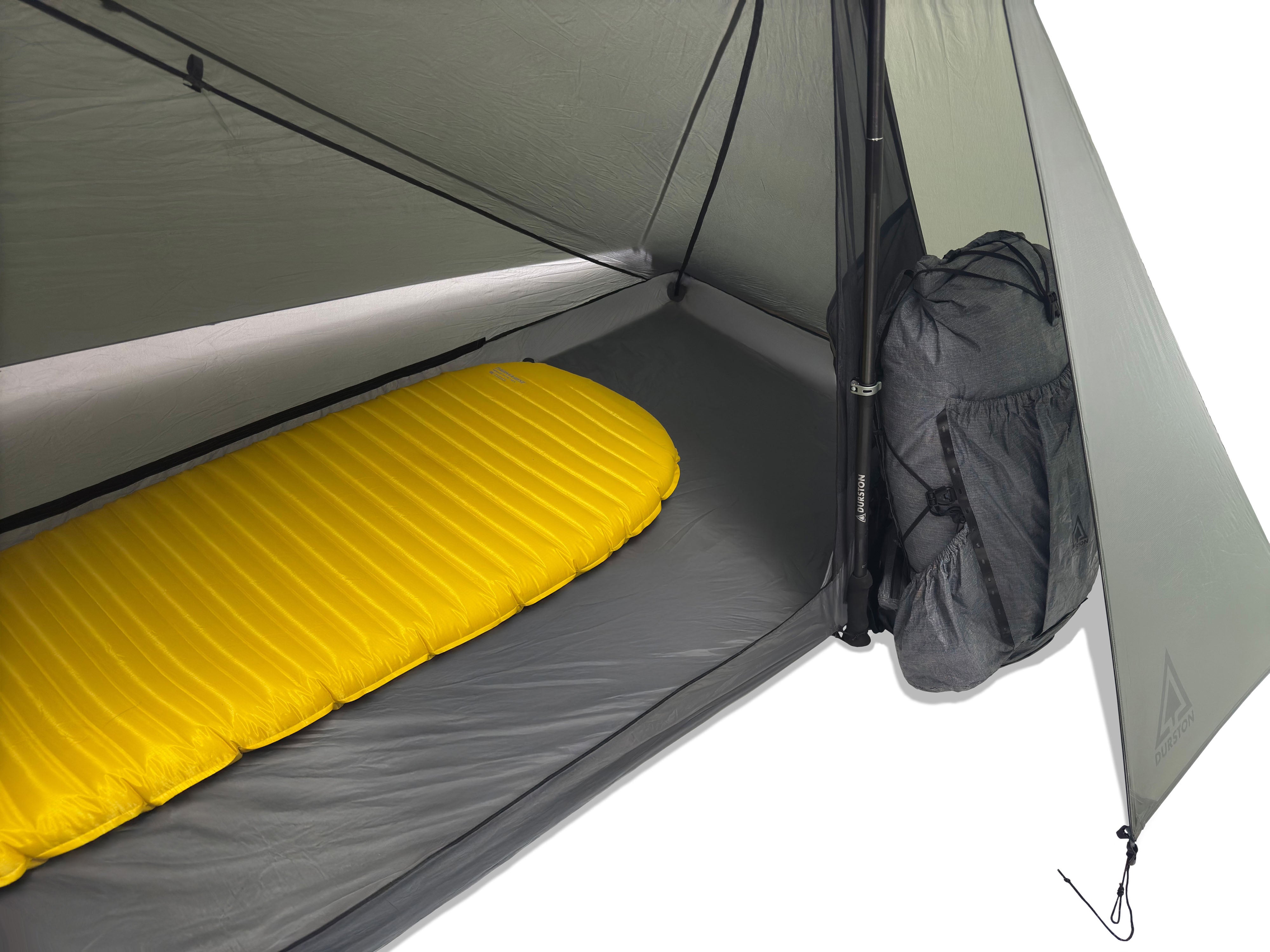
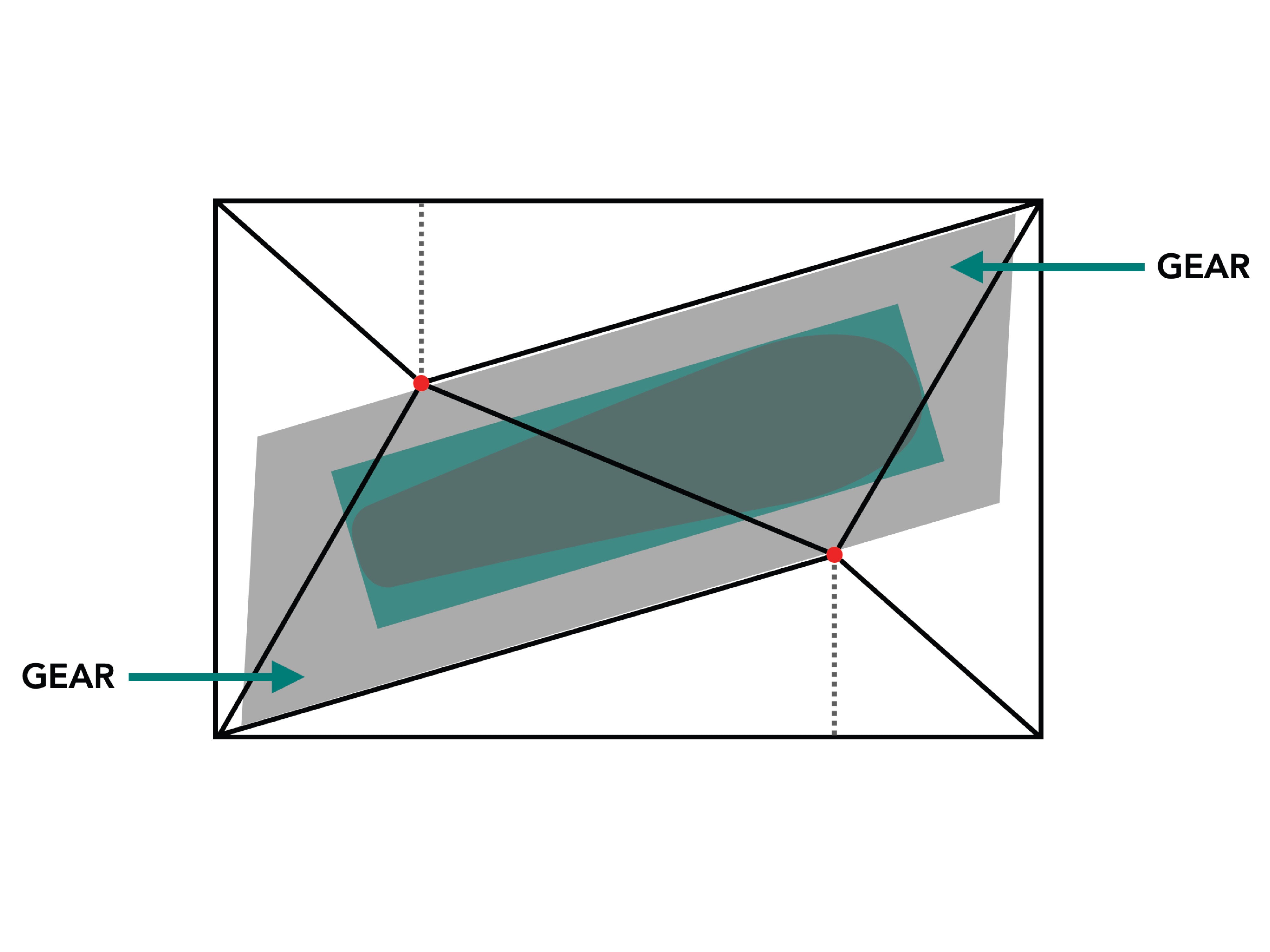
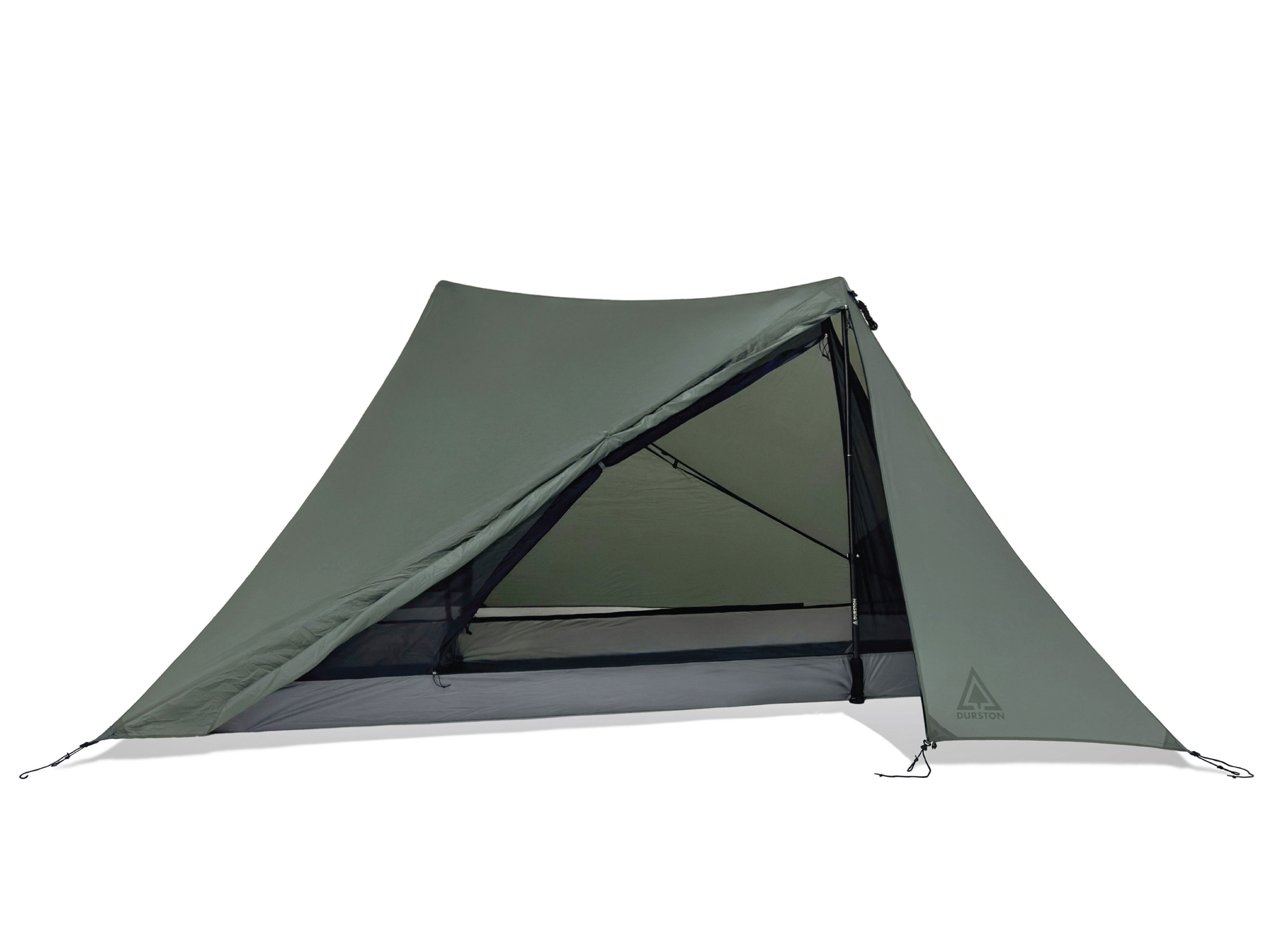

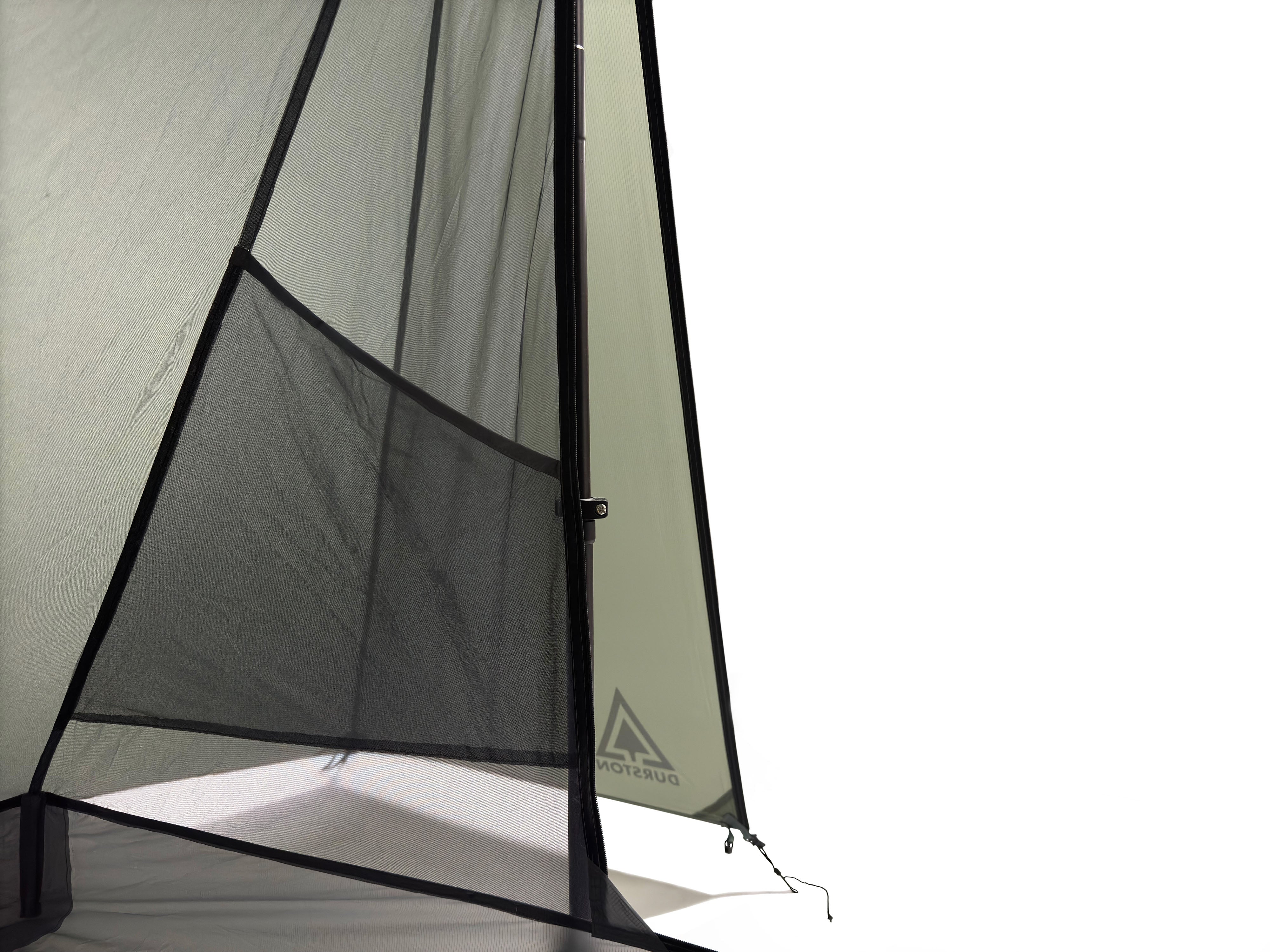
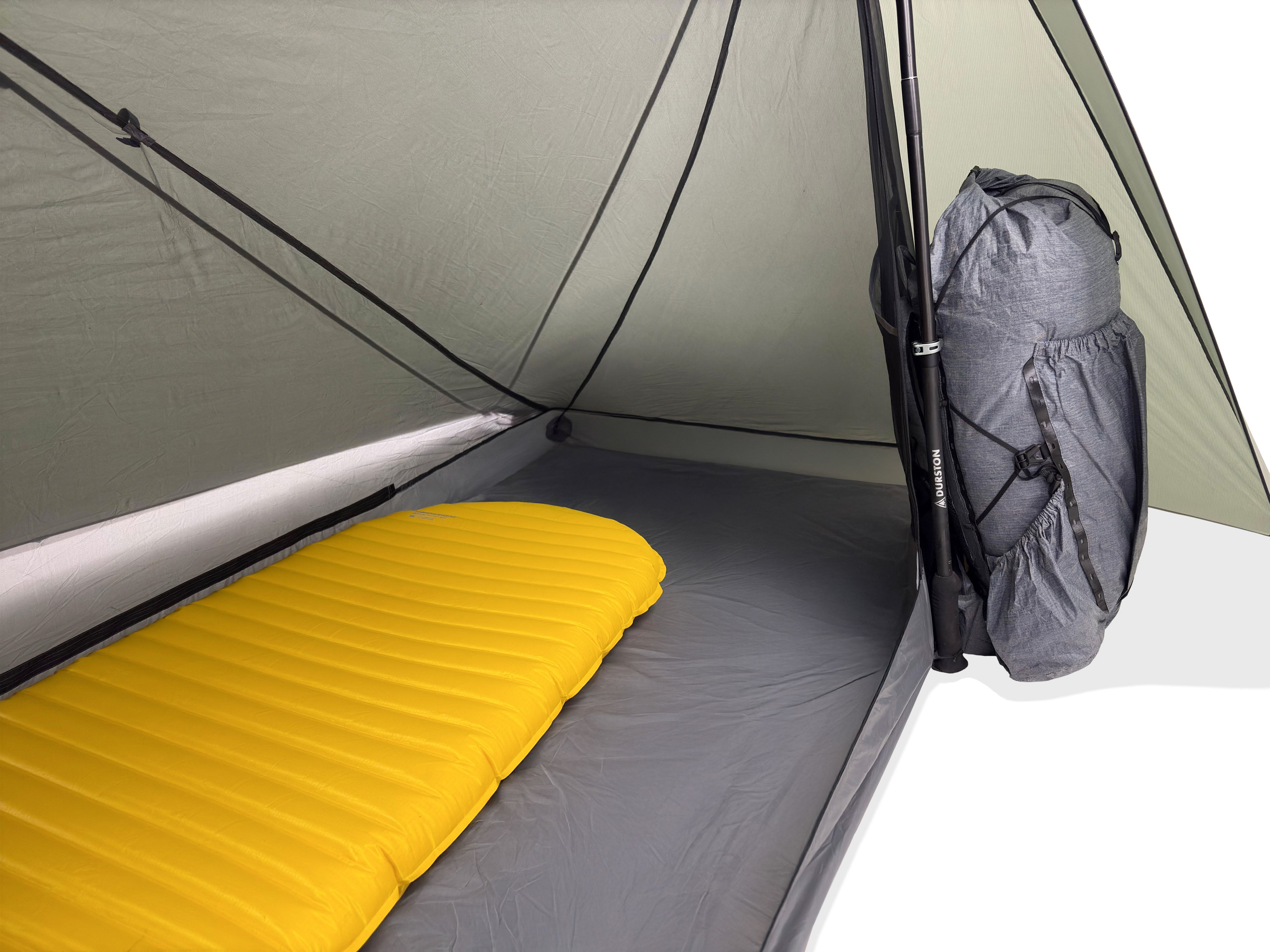
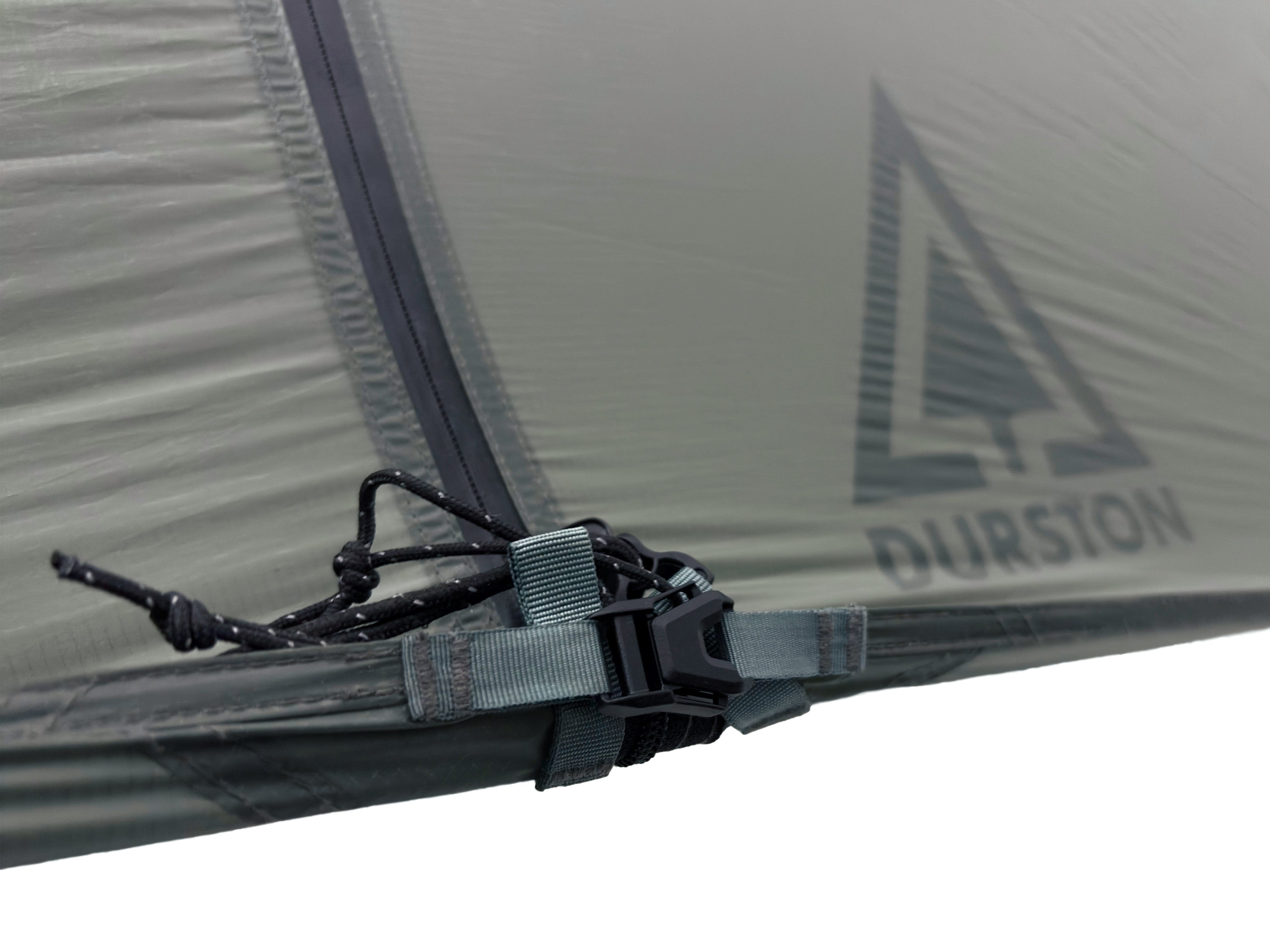
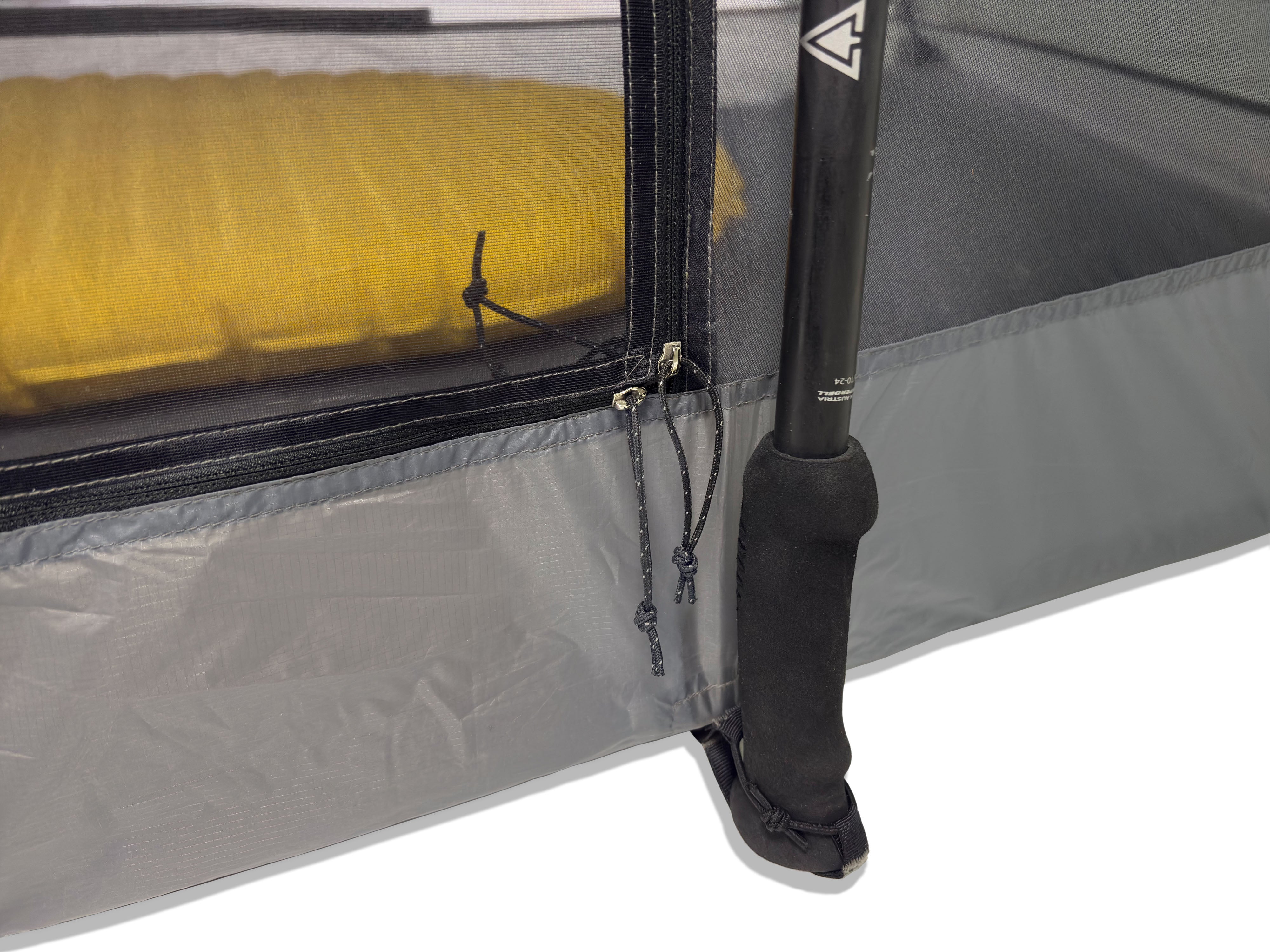
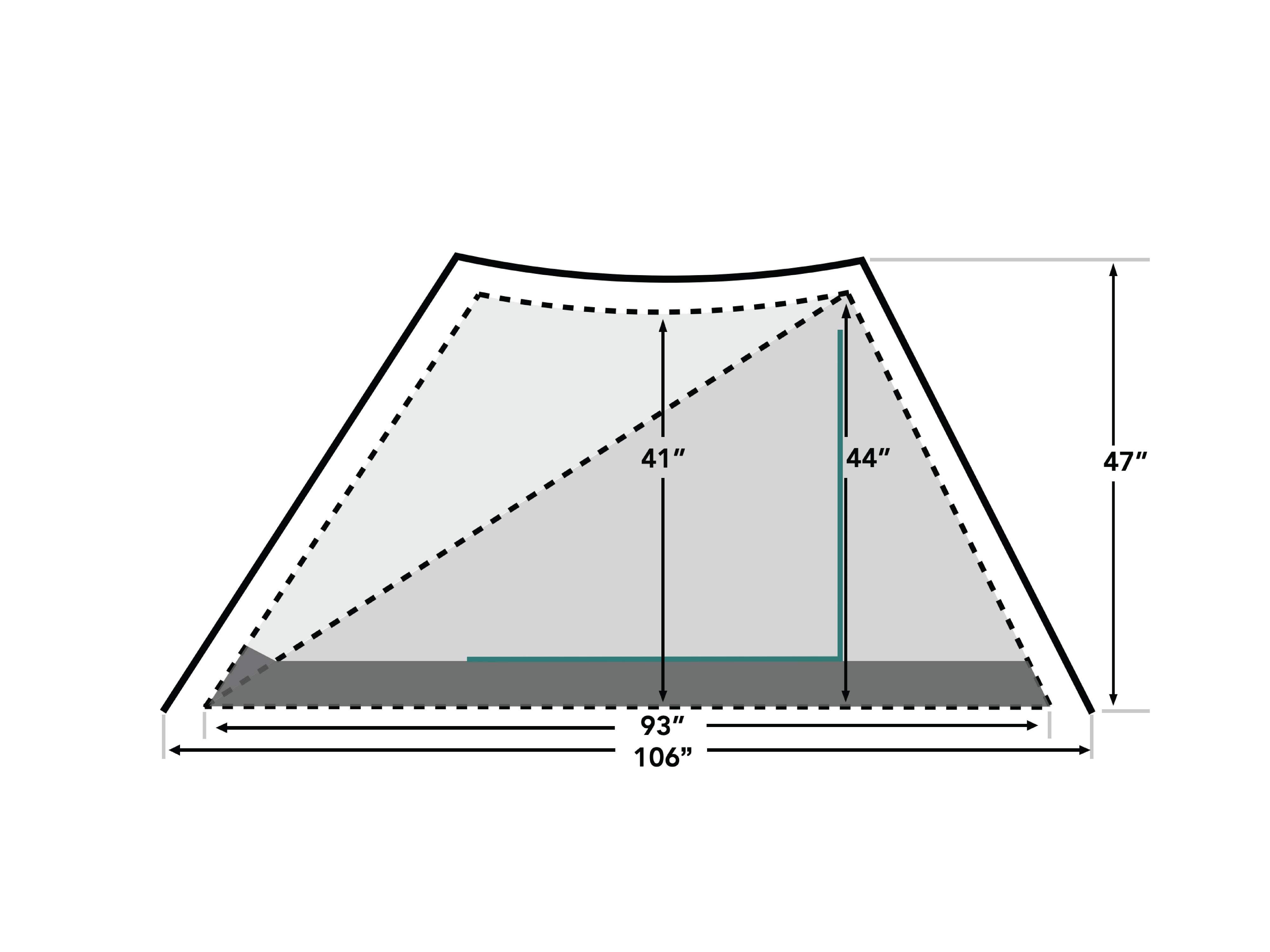
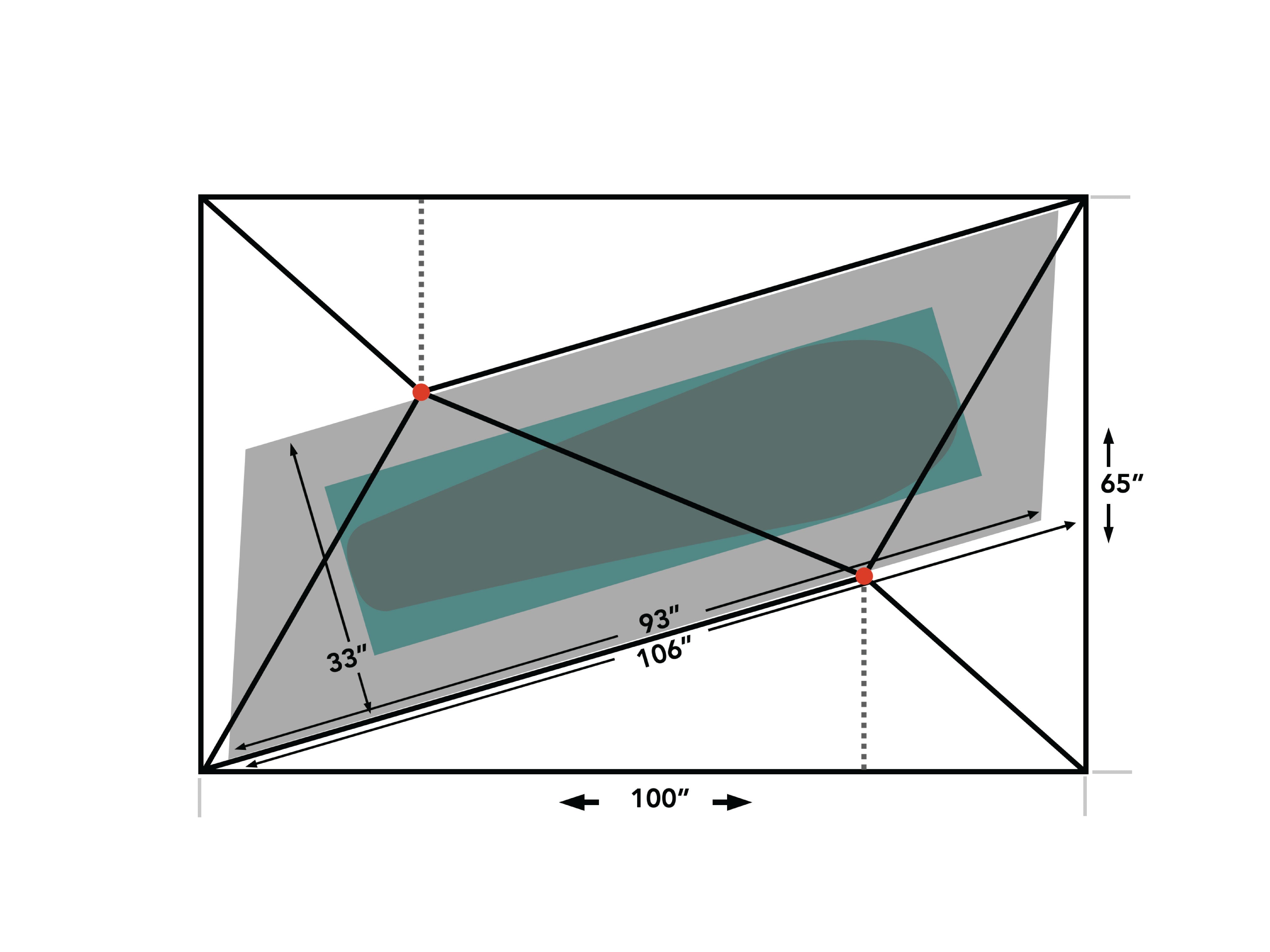
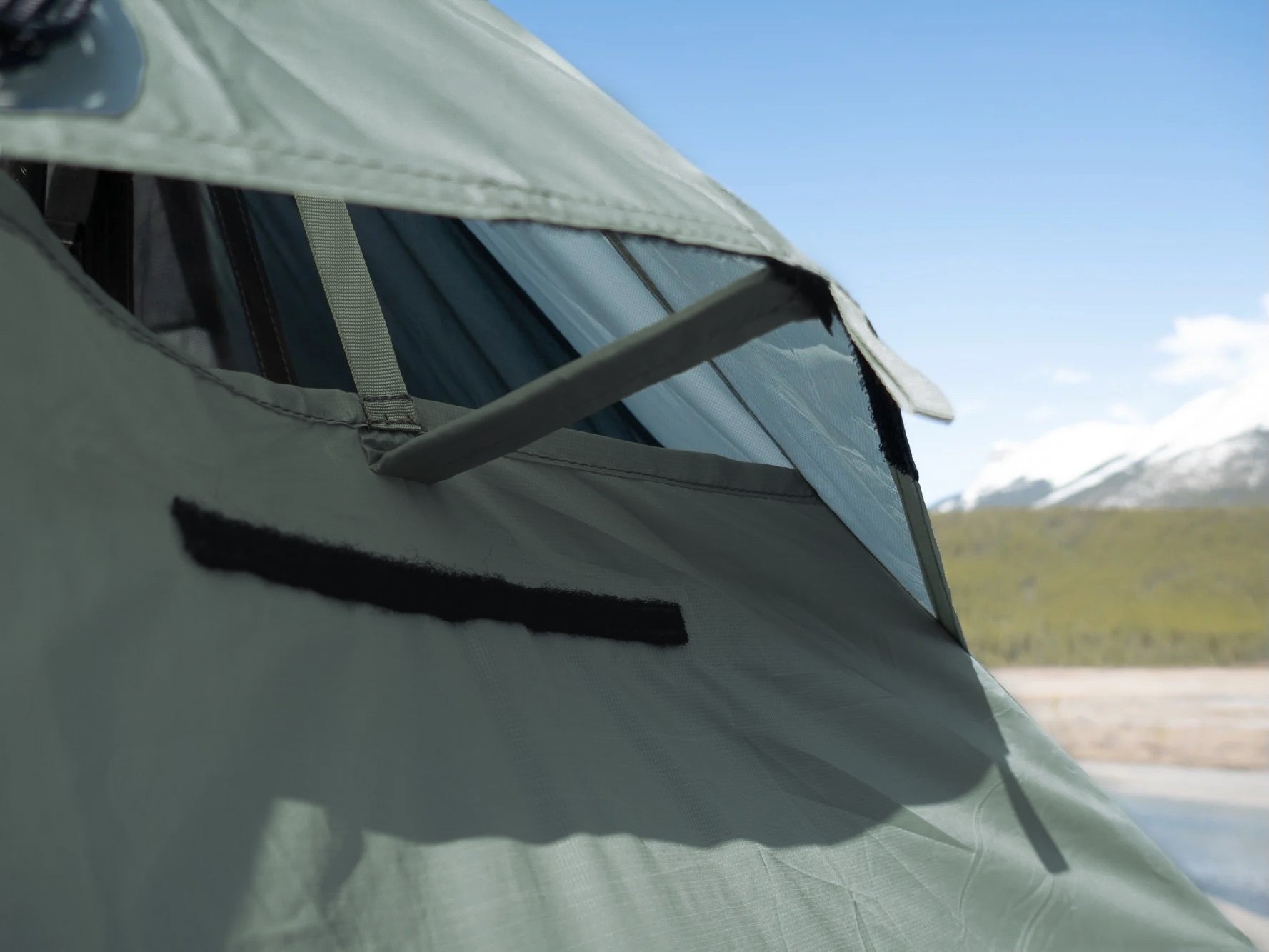
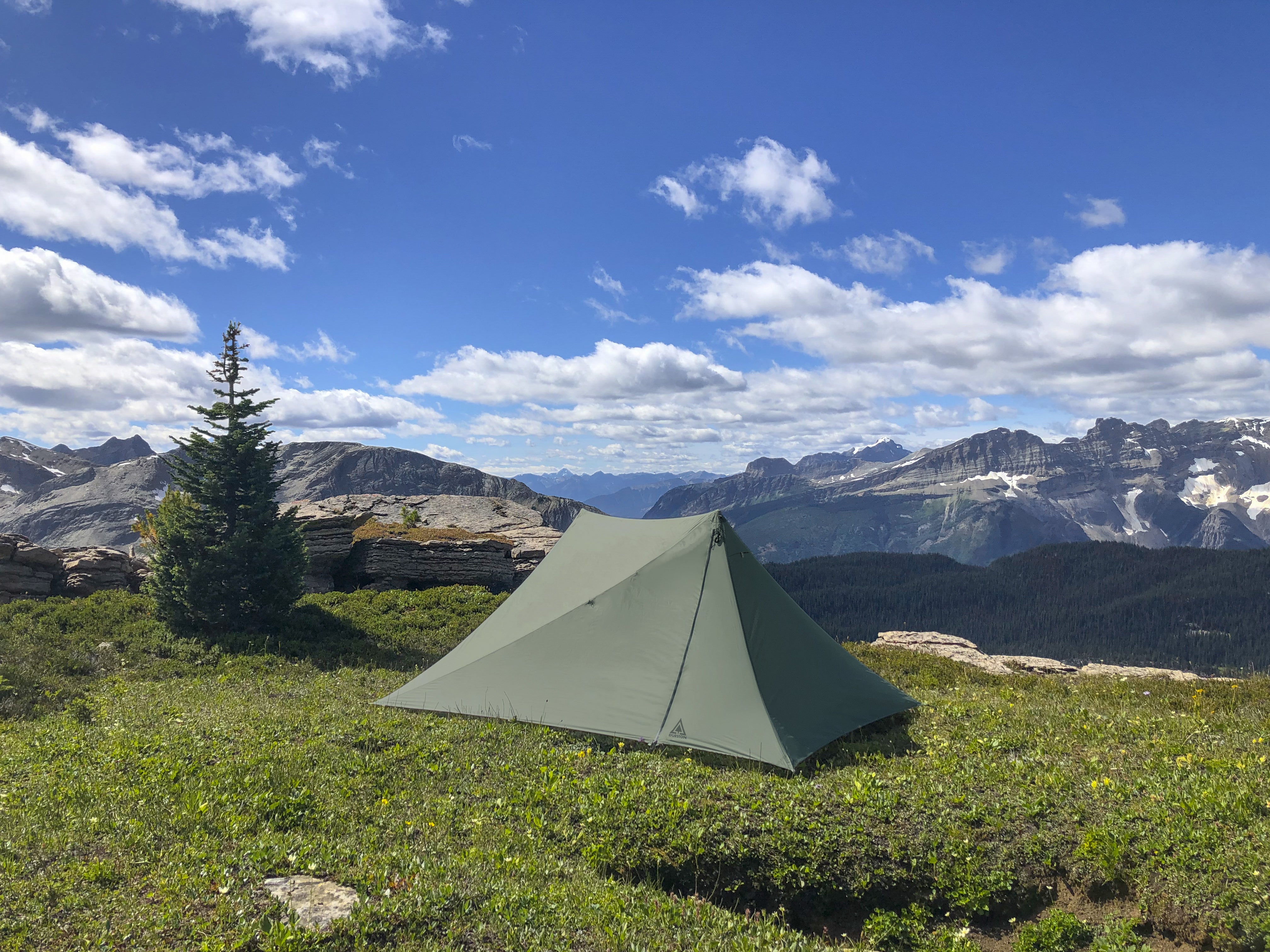
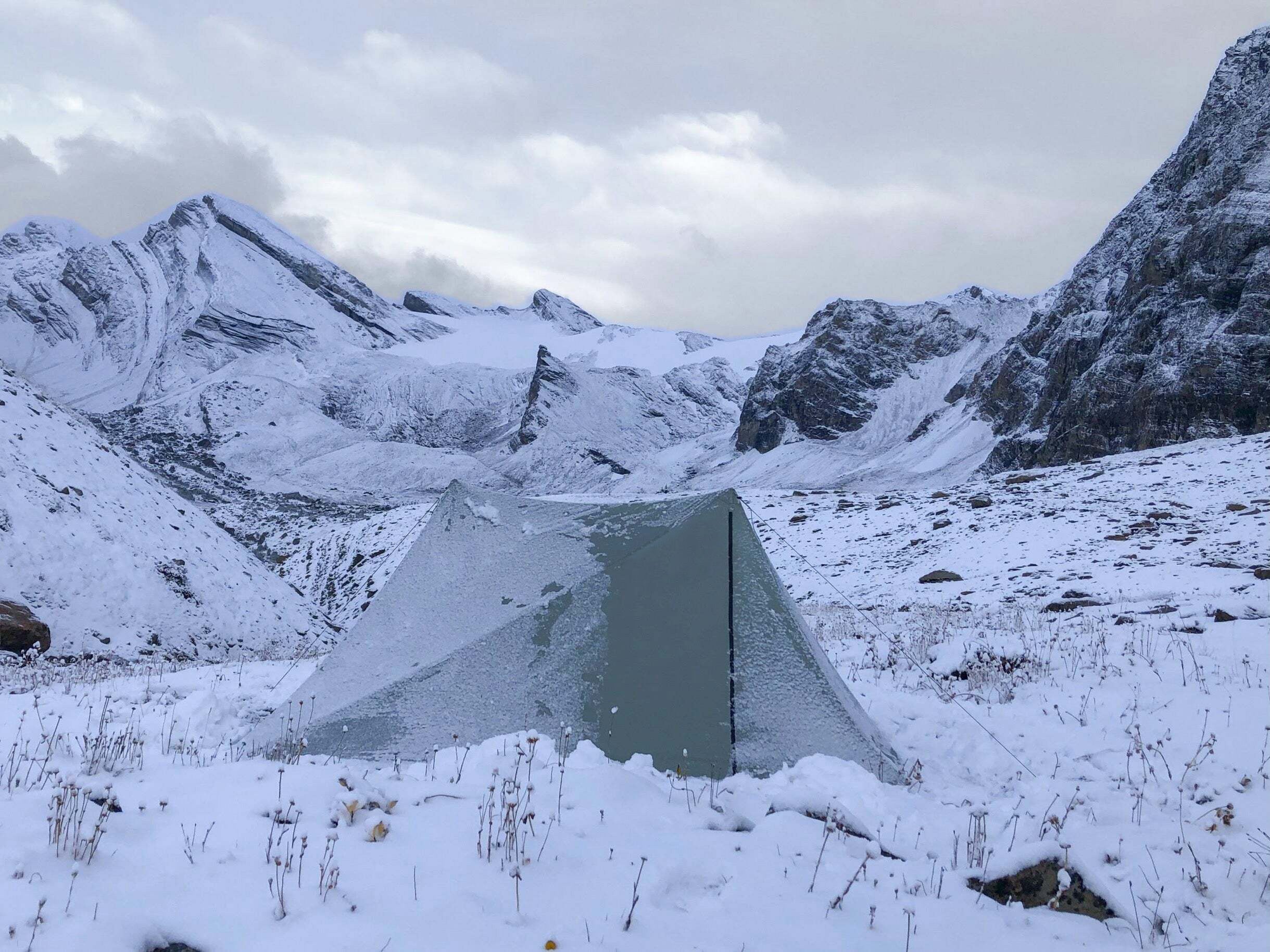
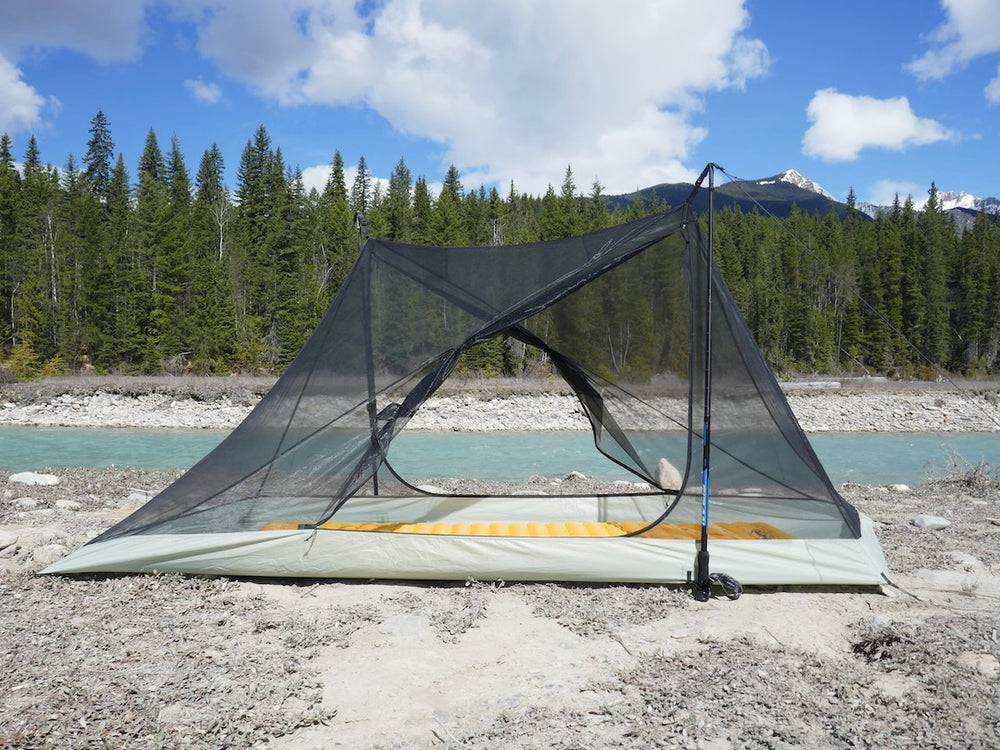
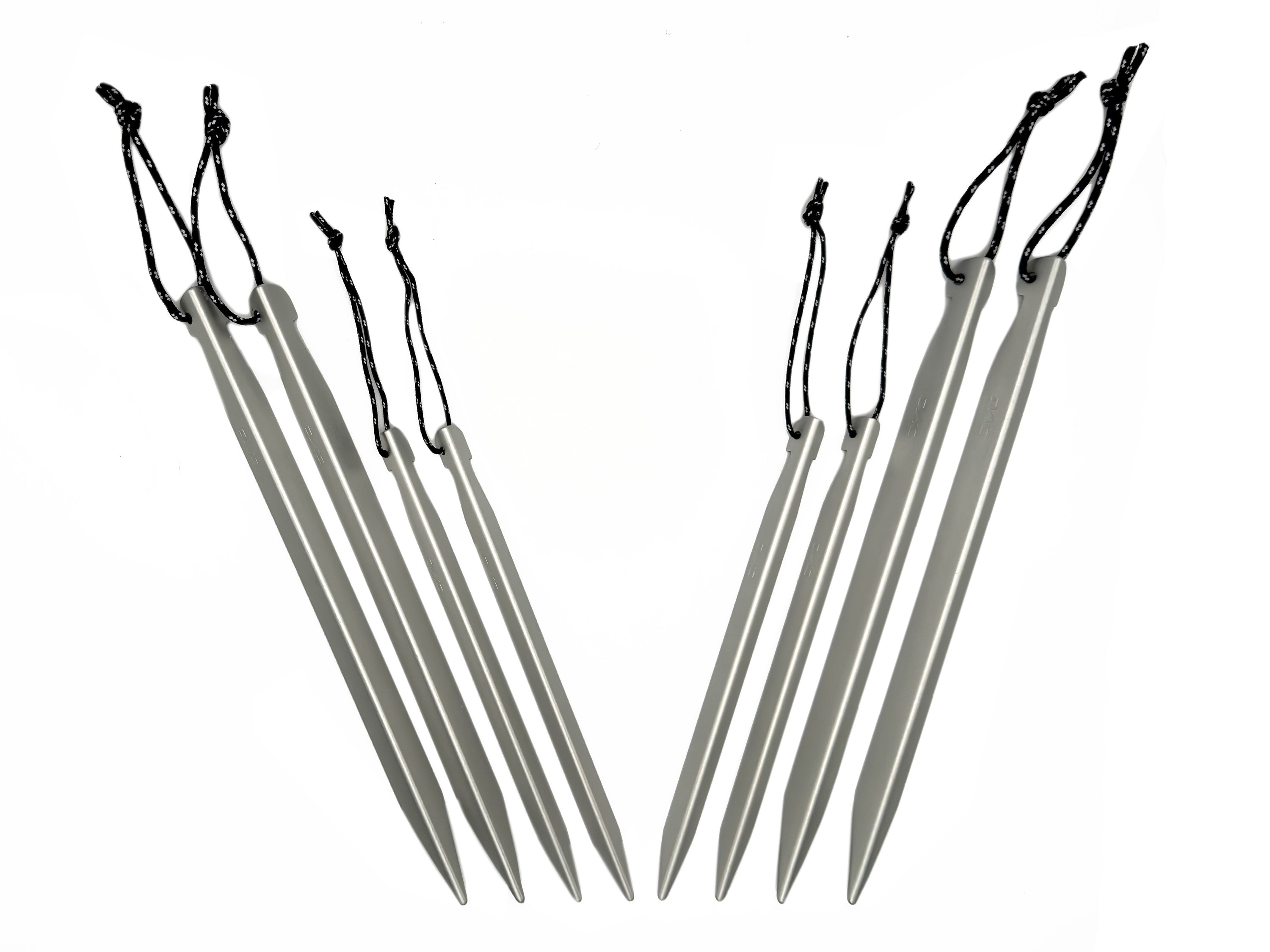
X-Mid 1

The X-Mid 1 has been completely redesigned for 2025 into a third generation model that is even lighter, more spacious, and more user friendly. Additional fall 2025 updates include additional fly reinforcements and thicker cordage. Full details on the third generation improvements are here.
Pinnacle of Lightweight Tent Design
The X-Mid 1 has been developed from the first principles of geometry to achieve the most weight efficient, simple to use, and stormworthy design for a trekking pole shelter. The result is a double wall tent that is incredibly user friendly, capable and spacious while weighing just 25 oz (720 g). As a result, it has become one of the most awarded tents in recent years including awards for best tent from The Trek, Outdoor Gear Lab, Section Hiker and numerous other respected outlets.
STORMWORTHY
Many ultralight tents are designed more as fair weather shelters and thus trade important protection for weight savings. This includes less waterproof coatings, cutting away areas of the fly to leave you more exposed, and omitting important features like peak vents and guy out points.
With the X-Mid, we focus on saving weight through efficient design such as minimizing seams, narrow high precision seam tape, and maximizing the volume:surface ratio, so we can create a tent that is both light and capable in tough conditions. The X-Mid excels in rough weather with its fly first pitch, full doublewall design, non-sag poly fabric, large adjustable vents, factory waterproofed seams, full-coverage fly (blocks rain splatter and drafts), stormworthy shape, and protected entryways that prevent rain falling inside. No other tent can claim that list.

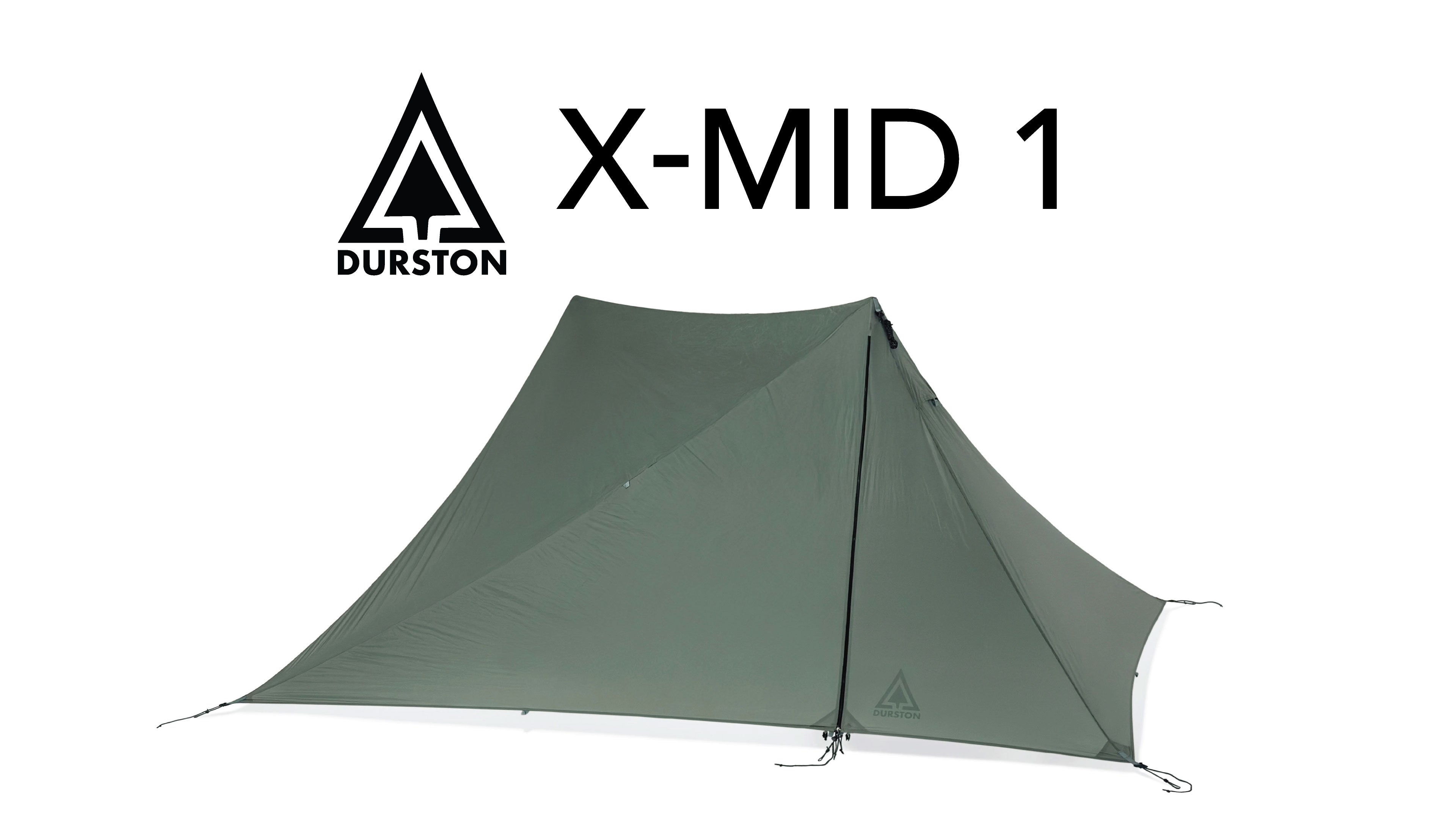
USER FRIENDLY
Simplicity and user friendliness are a major focus for the X-Mid because the last thing you want in bad weather or at the end of a long day is a tent that is a hassle to use. We avoid complexity and improve the user experience with our focus on first principles design, combined with obsessive attention to detail and extensive real-world validation.
Unlike most trekking pole tents, the rectangle based X-Mid offers a simpler 4 stake pitch. There are no mandatory guylines, no struts that are harder to pack up and store, and no measuring pole heights or estimating odd angles. It goes up quickly with just 4 required stakes and 2 poles that can be extended without measuring.
Once pitched, the user friendliness continues with large doorways that aren’t blocked by poles, vestibules that put the main area beside the door instead of blocking it, magnetic door toggles, 4 intuitive pockets, and one hand operated zippers. Notably, the X-Mid uses polyester fabric for the fly which doesn't sag and absorb water like nylon so your pitch stays tight and the tent dries quickly. Polyester was controversial when we launched the X-Mid with it in 2018 but our passionate advocacy for it has since led to an industry wide shift.
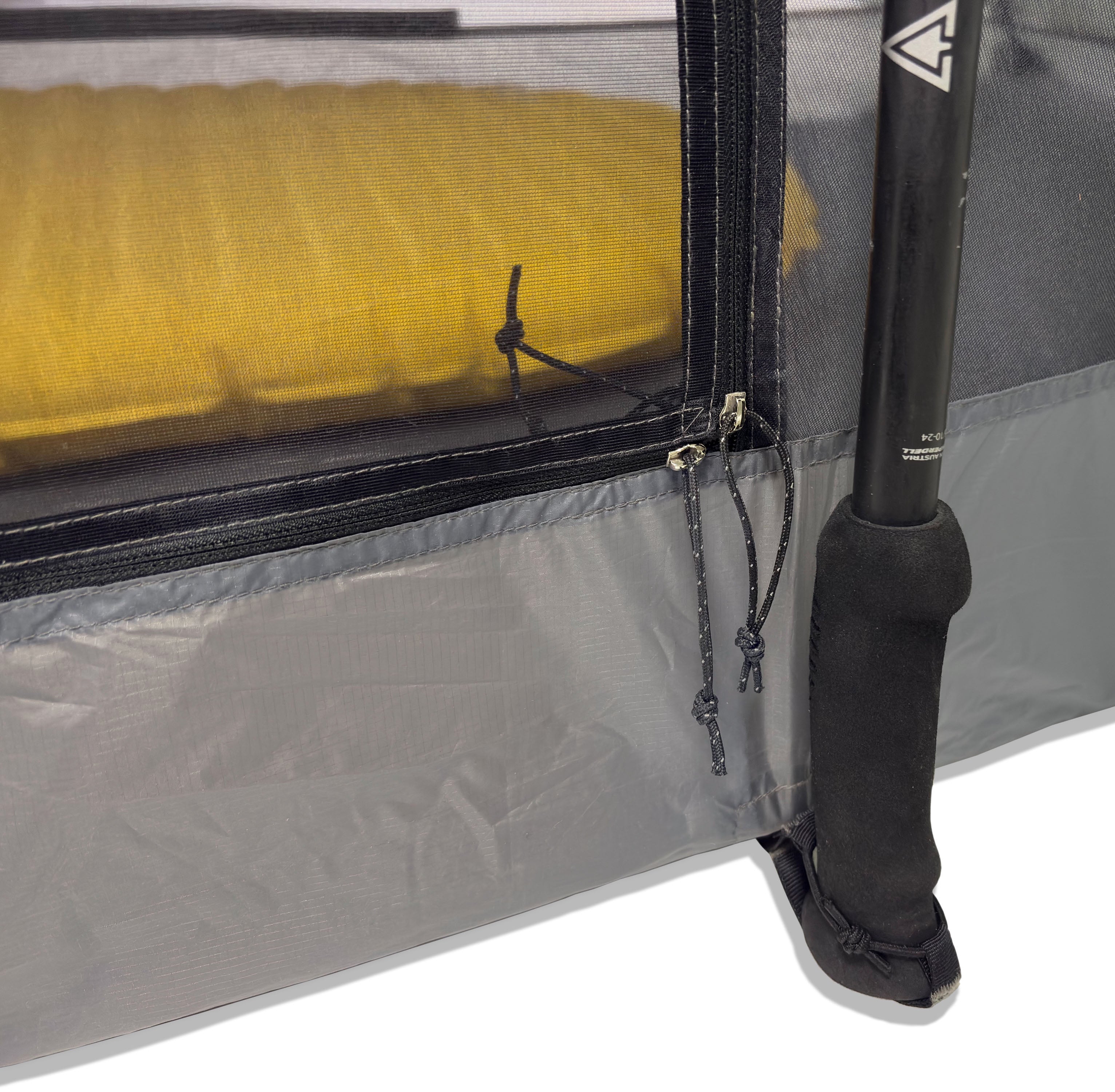

Outdoor Gear Lab
Best Overall Ultralight Tent
"Without a question, the X-Mid 1 is the best lightweight tent. It's hard for us to believe such an easy-to-set-up tent can be so delightful to spend camp time in and almost invincible to storms."

Section Hiker
Editors Choice
"The X-Mid 1 is my favorite tent...it is a great shelter if you want a trekking pole tent that is affordable, spacious, stormworthy, and packs up small."

The Trek
We Love This Tent
"A laundry list of well-thought-out details makes this tent exceptional in rough weather....it is our all around best thru-hiking tent."

Paul Messner (YouTuber)
Best 2023 Tent
"A brilliant tent.....there's been a lot of hype around this tent and I think it's justified. It does everything really really well....the X-Mid ticks more boxes than any other"

Backpacking Light
Cottage Gear Innovation Award
"With a new type of design...the Durston X-Mid 1P offers light weight, livable space, ease of pitch, and storm resistance that we've never seen before"
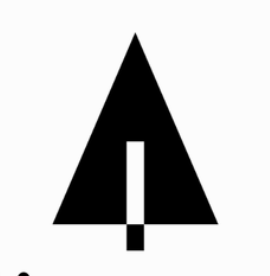
Treeline Review
Best Ultralight Tent for Thru-Hiking
The Durston Gear X-Mid 1 is our favorite tent for thru-hiking because it’s great in high winds, versatile, easy to pitch, and surprisingly affordable. This tent is very well designed.
SPACIOUS
The X-Mid geometry maximizes the space possible from two poles by using a diagonal ridgeline that positions the two poles further apart, while avoiding placing the poles near the edges that would detract from wind performance.
The result is a spacious 1P tent with best in class headroom. The two poles give headroom throughout the length of the tent so you can sit up anywhere in the tent and easily transition from laying down to sitting up without hitting the tent ceiling.
The floor is a generous 93" (2.36 m) length which is combined with steep end walls to provide suitable length for hikers up to 6'4" (193 cm), while the floor width is a comfortable 33" (84 cm) that accommodates the widest pads. Also generous are the dual vestibules, which are spacious, tall, and easily hold even large packs.
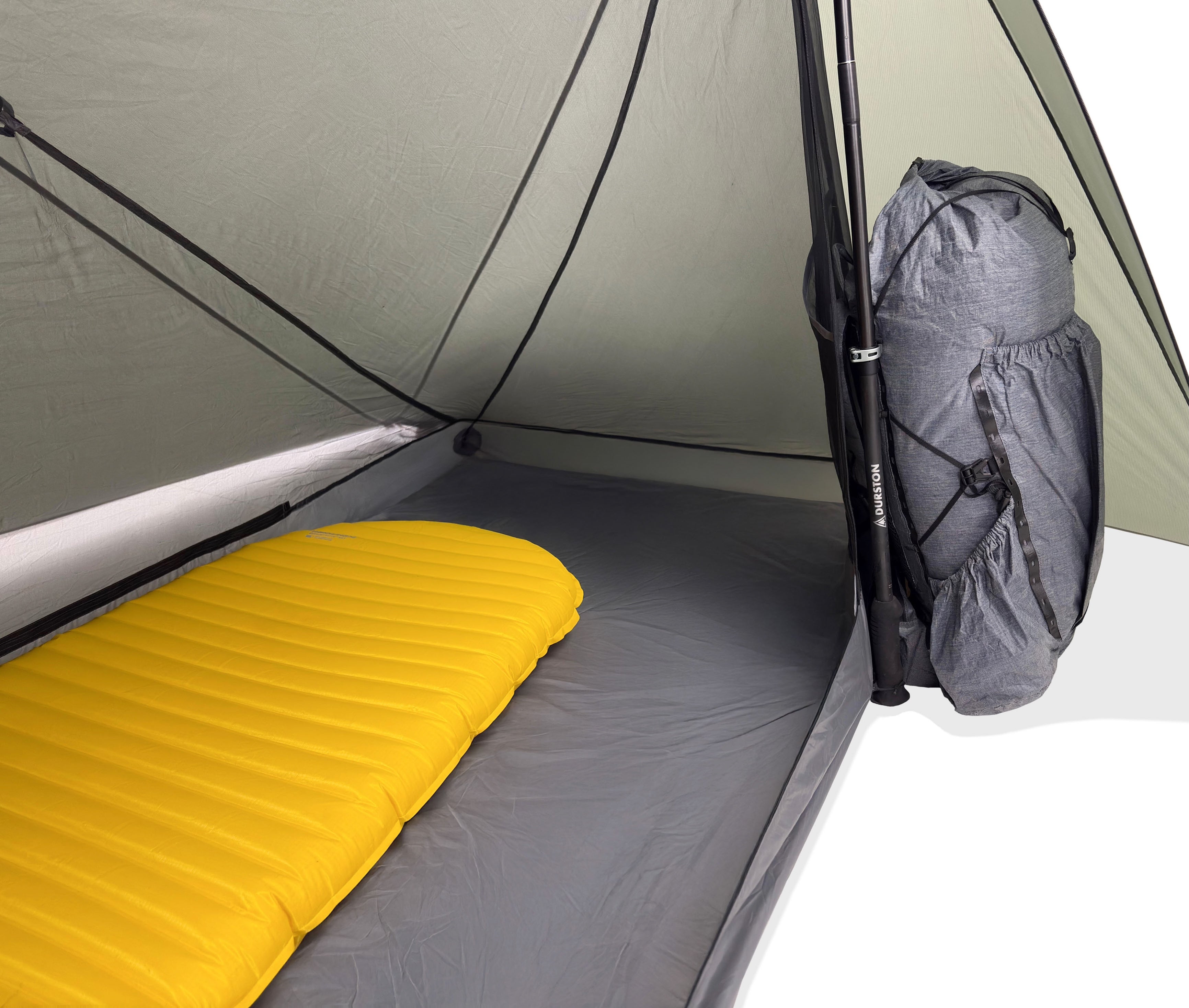

QUALITY
In addition to the highest performance design, the X-Mid boasts the highest quality.
The tent is crafted at arguably the best and most experienced tent factory in the world using premium fabrics, full double stitching, double folded edges, and generous bartacking.
While this premium quality gives the X-Mid a higher cost of production than comparable tents, the X-Mid 1 is priced affordably simply because we sell it to you direct with only a modest markup.
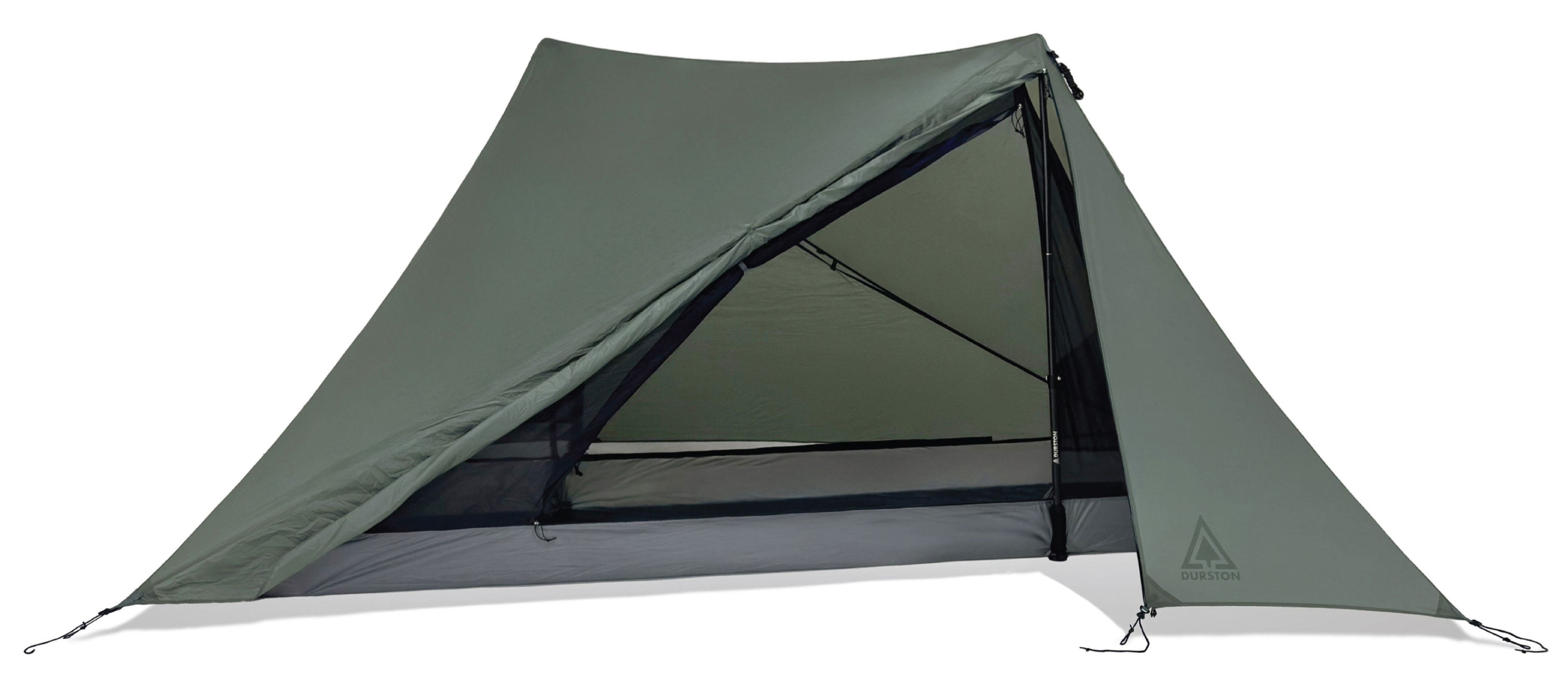
Magnetic Toggles
Magnetic door toggles with pull tabs provide easy one handed-operation.
Large Doorways
Unlike most trekking pole tents, the doorways are large and not blocked by trekking poles. They also have a protected design to keep rain out even when open, and can be propped open with a stick or pole to create a 'porch'.
Full Coverage Fly
The fly extends low to the ground to block drafts and rain splatter, yet can be raised higher for more ventilation. Other tents cut away the bottom of the fly to save weight but it leaves you more exposed.
Stormworthy Shape
The X-Mid provides the ideal shape with consistent and moderate panel slopes. All the panels are an ideal 50 - 55 degrees which balance wind and snow shedding to provide excellent all around performance. Most tents are less consistent with a mix of shallower panels (worse for snow shedding) and steeper panels (worse for wind performance).
Generous Space
The X-Mid's offset poles provide a longer diagonal ridgeline that extends the headroom over more of the tent. There is ample clearance to transition from laying down to sitting up without hitting the tent, and room to sit up anywhere in the tent.
PATENTED GEOMETRY
The X-Mid shape has been developed from the first principles of geometry to be as weight efficient, simple, and functional as possible.
That includes avoiding all the common pitfalls of trekking pole shelters such as a complicated pitch, mandatory guylines, poles blocking the doorways, and a lack of interior volume.
Read the story about how the X-Mid geometry was developed:
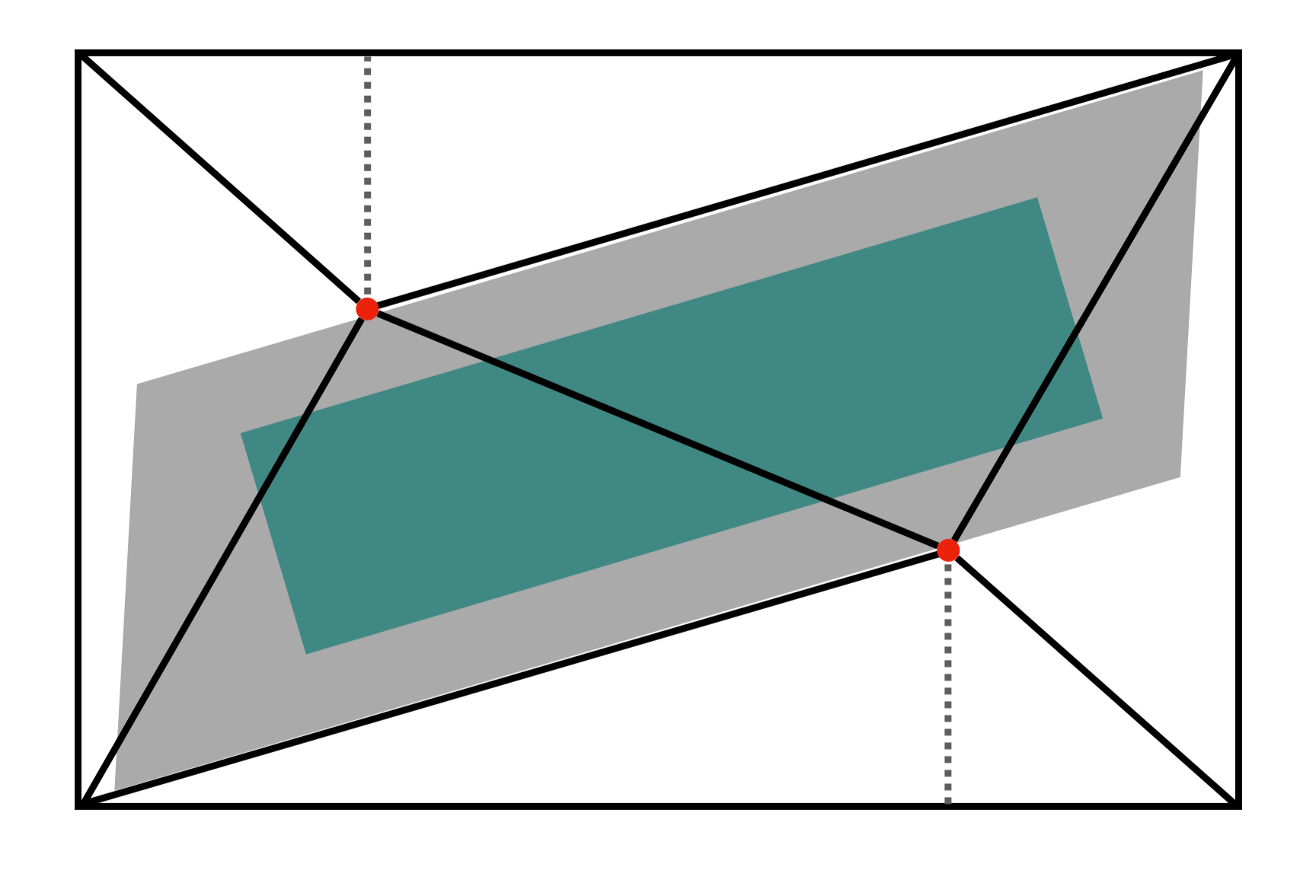
As an incredibly well rounded, spacious, and capable shelter, the X-Mid 1 is the ideal ultralight tent for everything from a long thru hike to a remote adventure in Alaska. That's why the X-Mid 1 has become both the most popular and highest rated 1P tent on all three triple crown trails (Applachian Trail, Continental Divide Trail, and Pacific Crest Trail) according to hiker surveys by The Trek and Halfway Anywhere.

